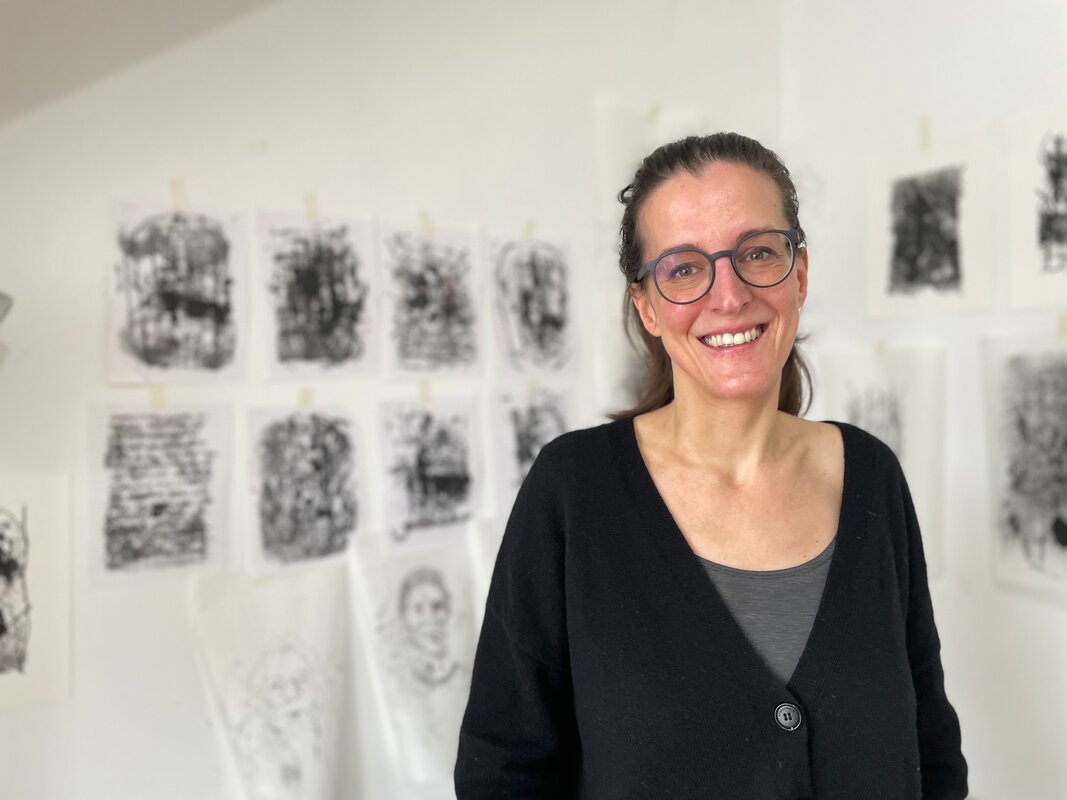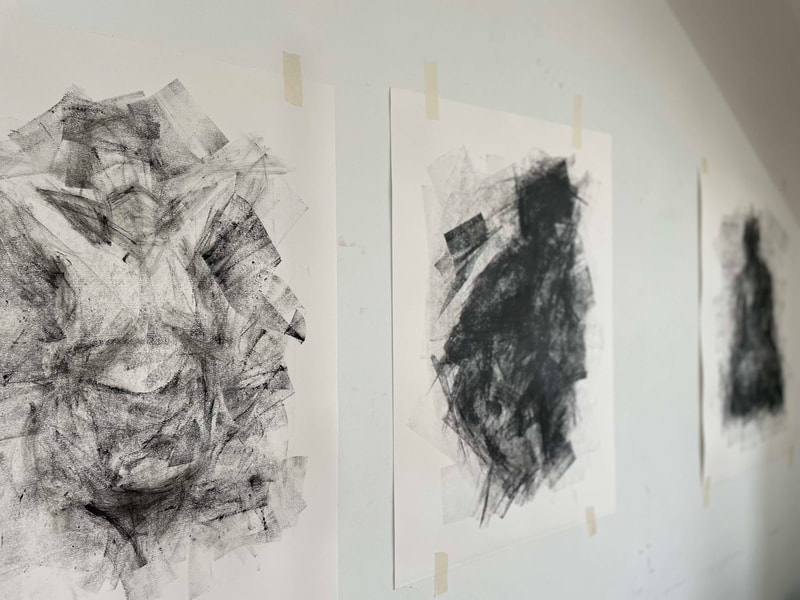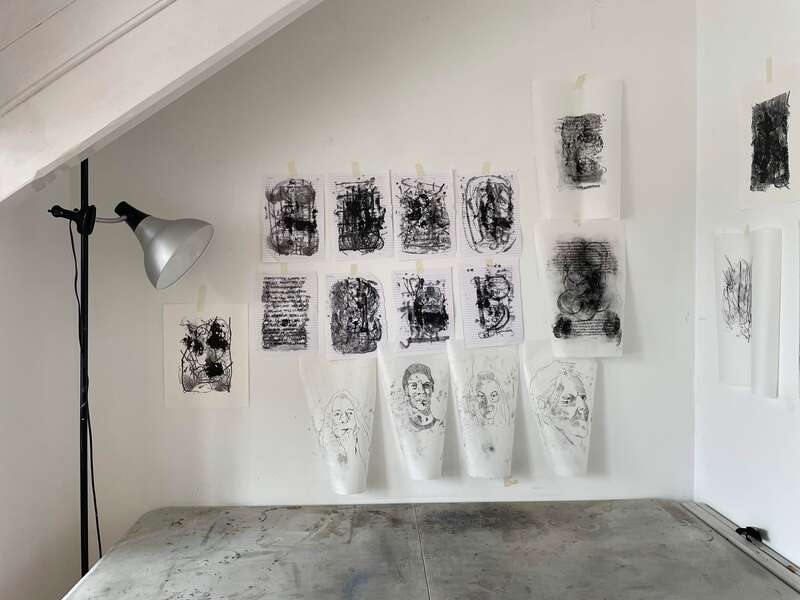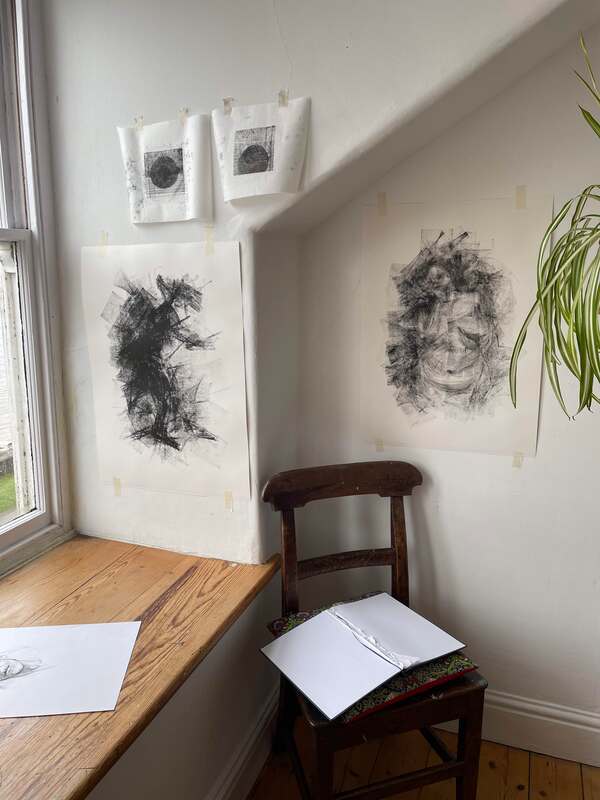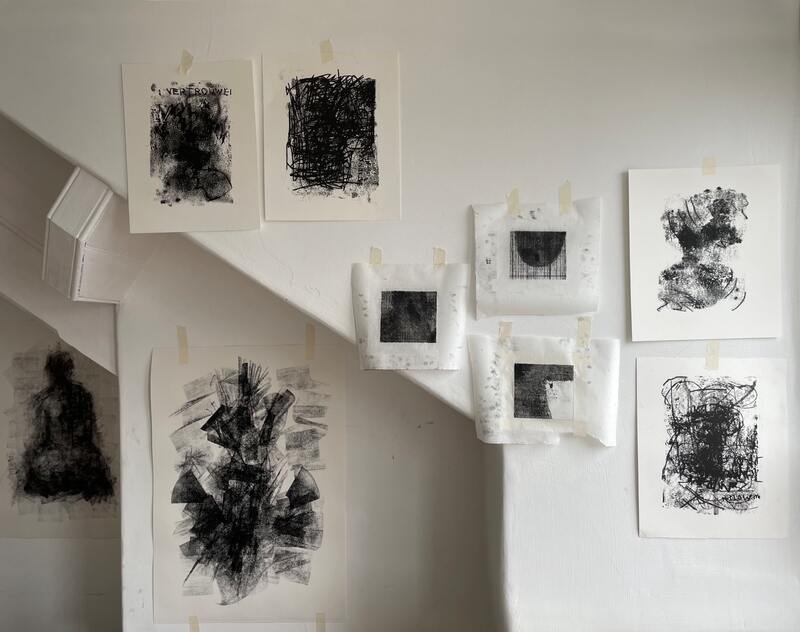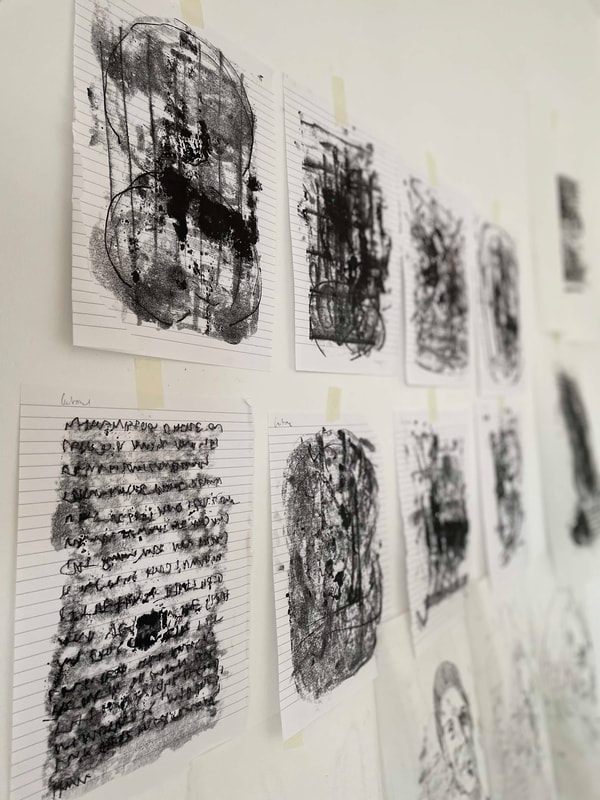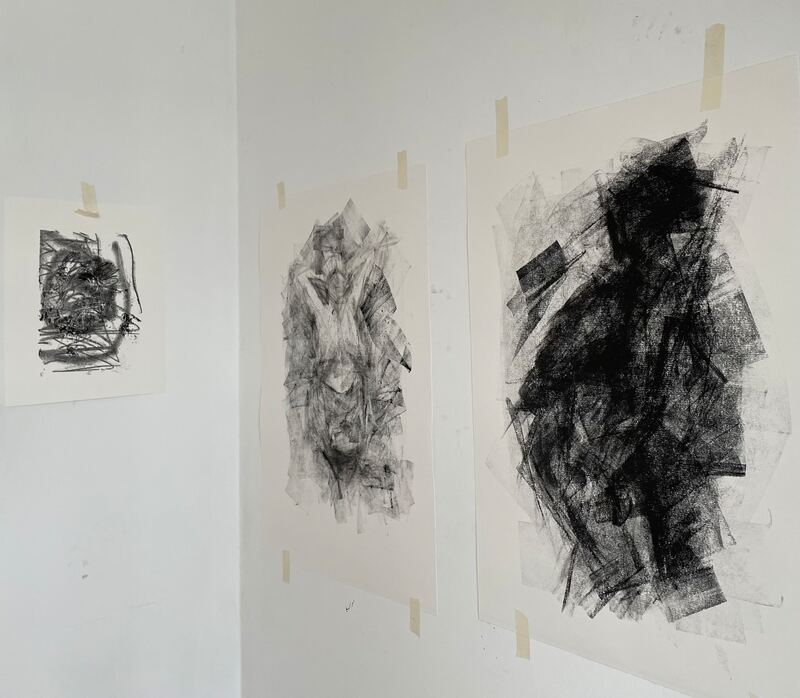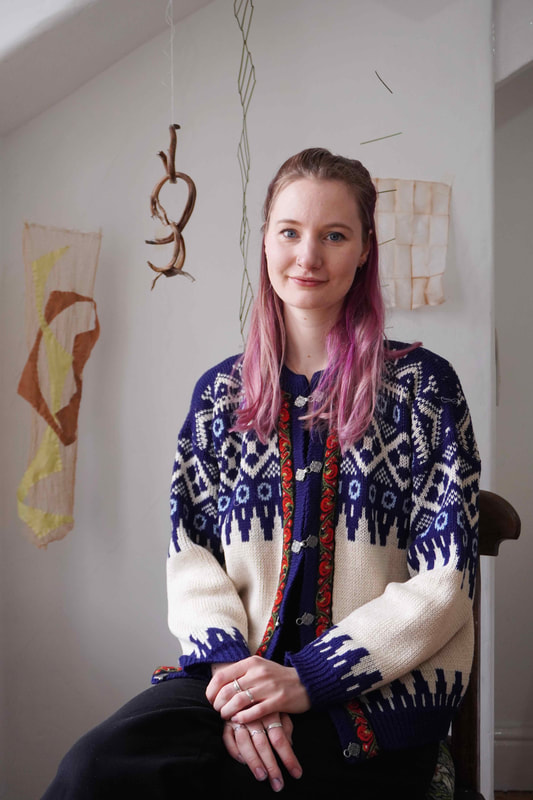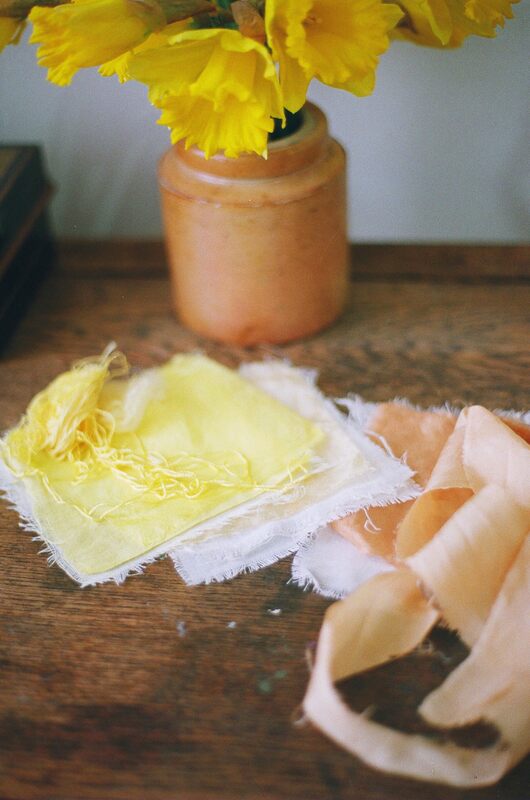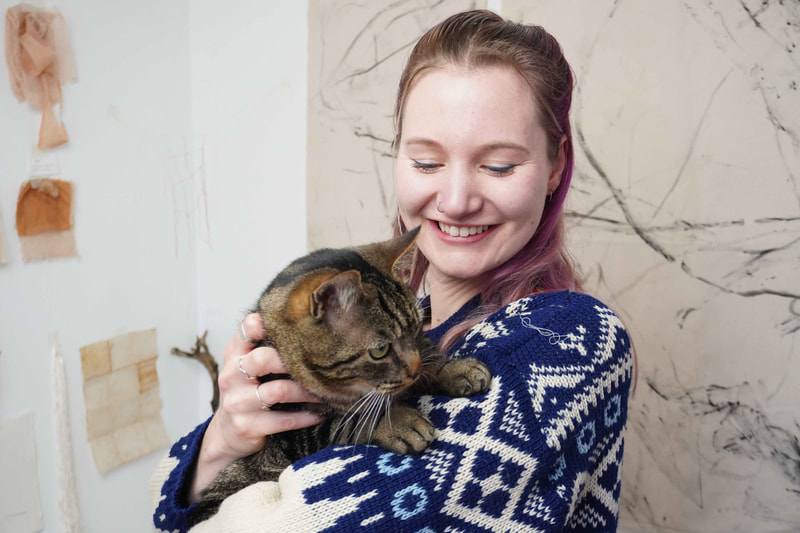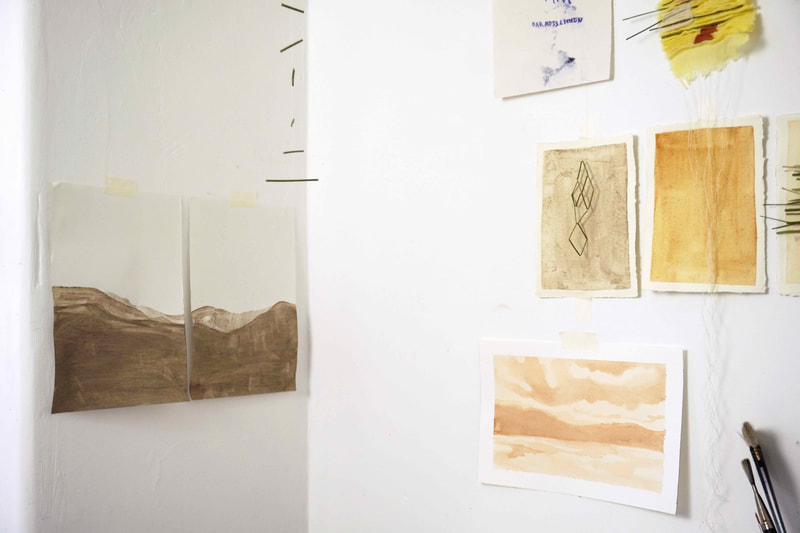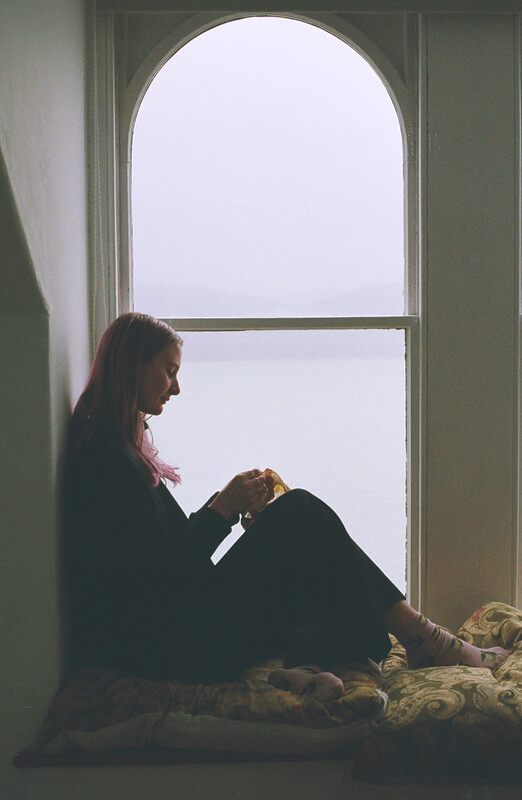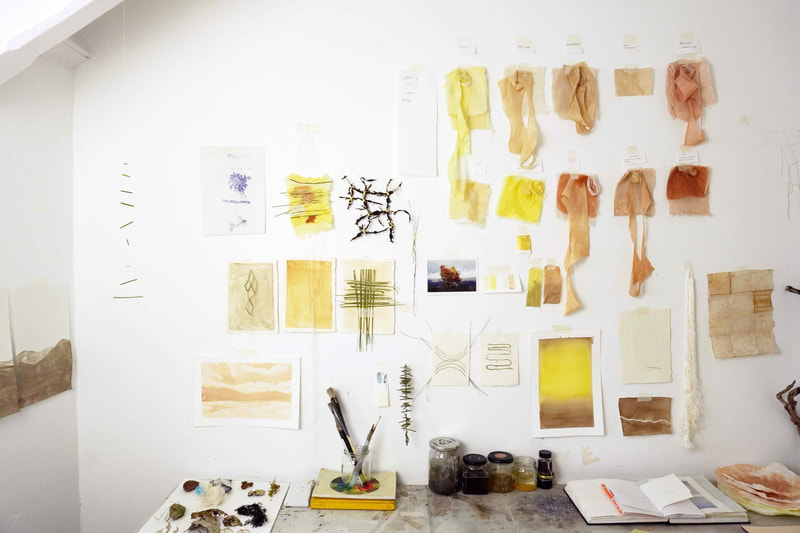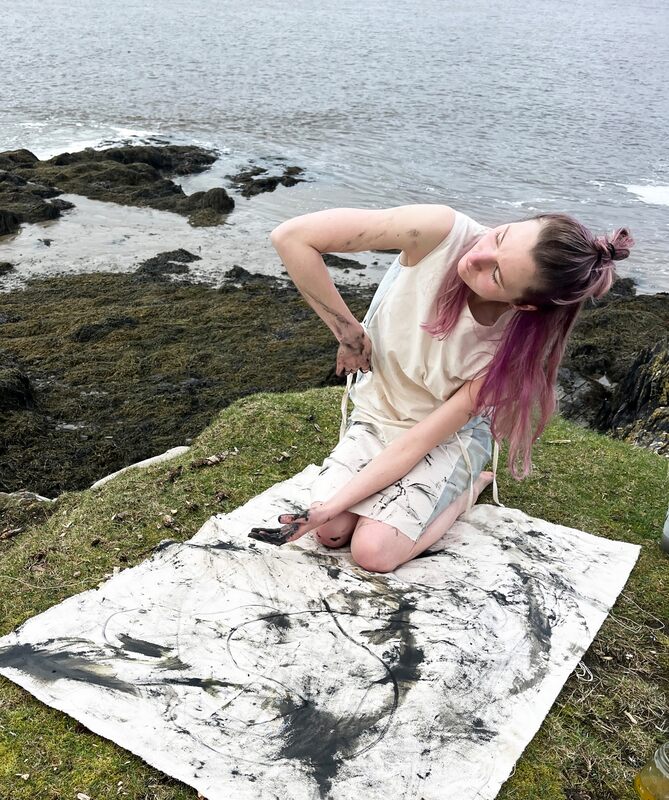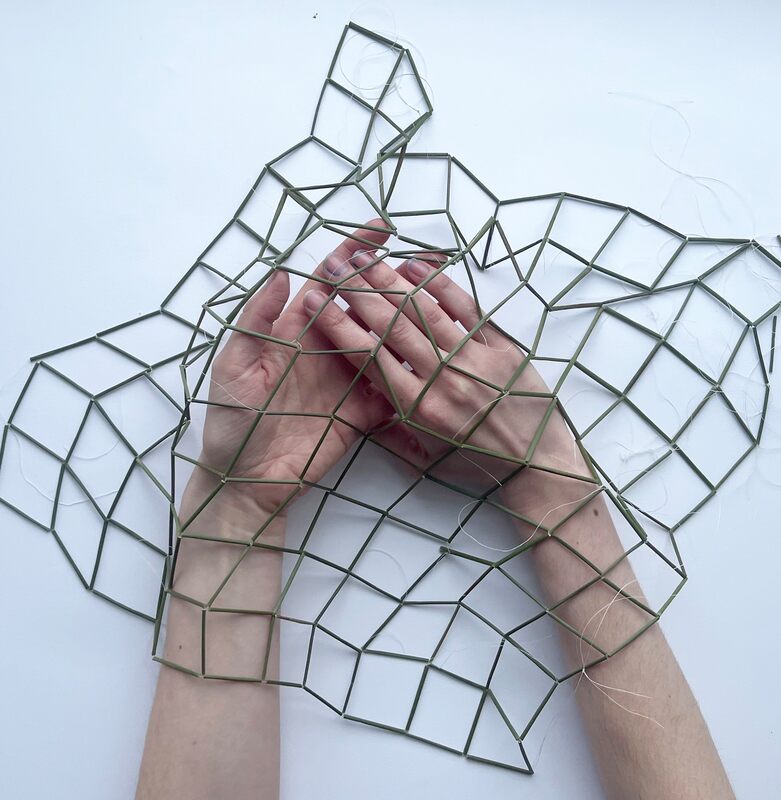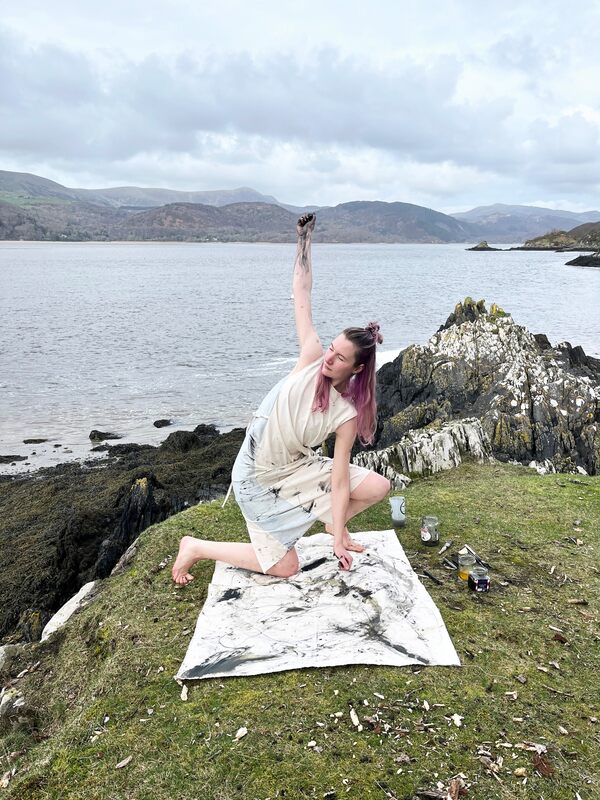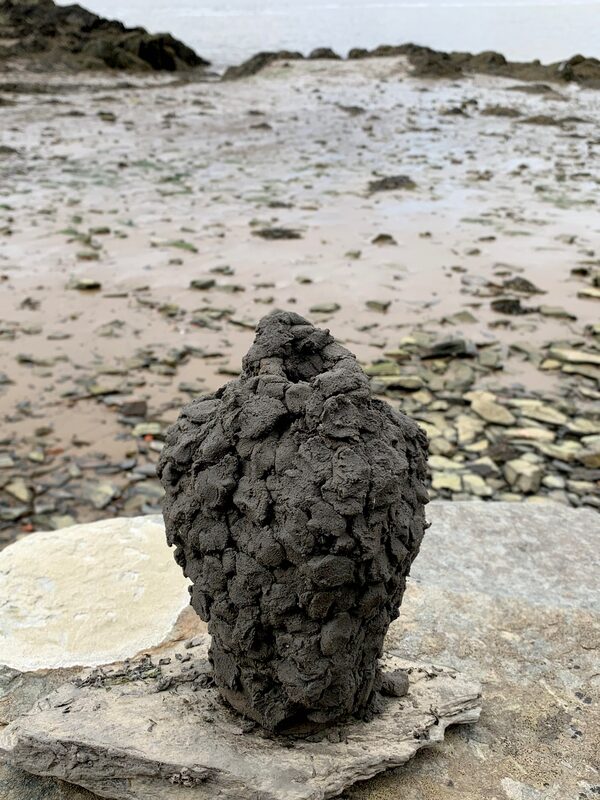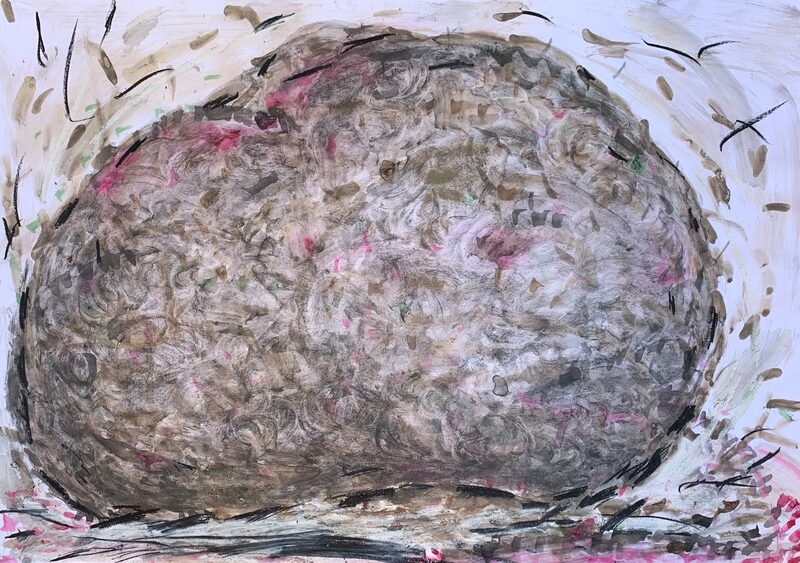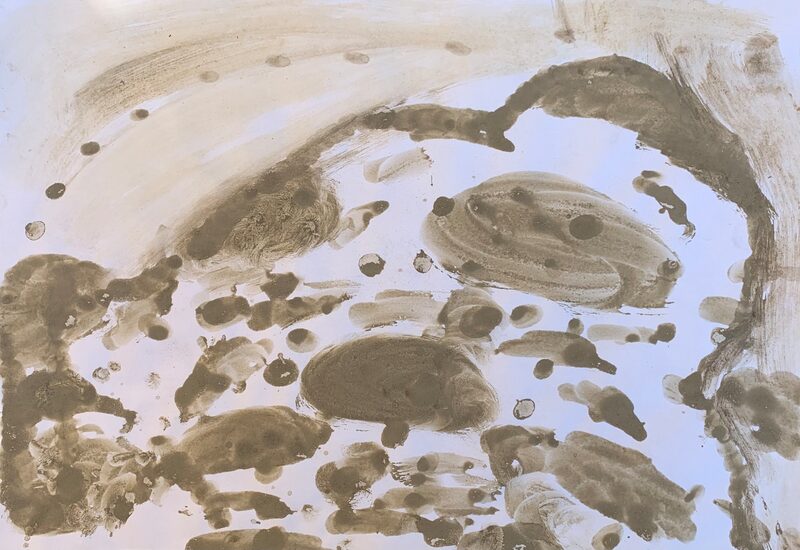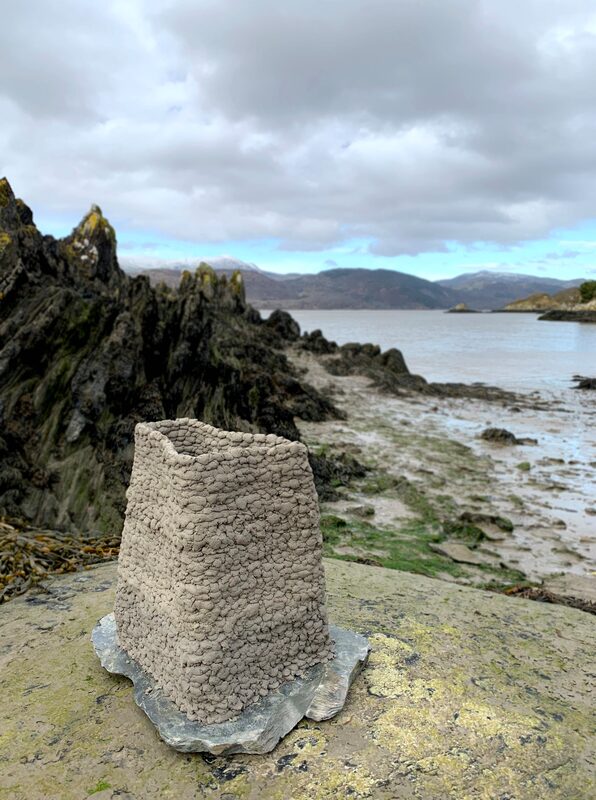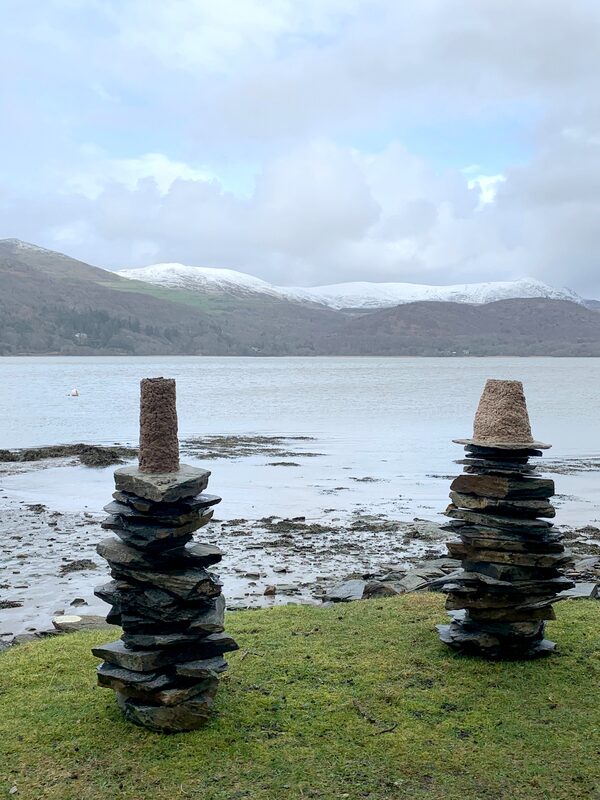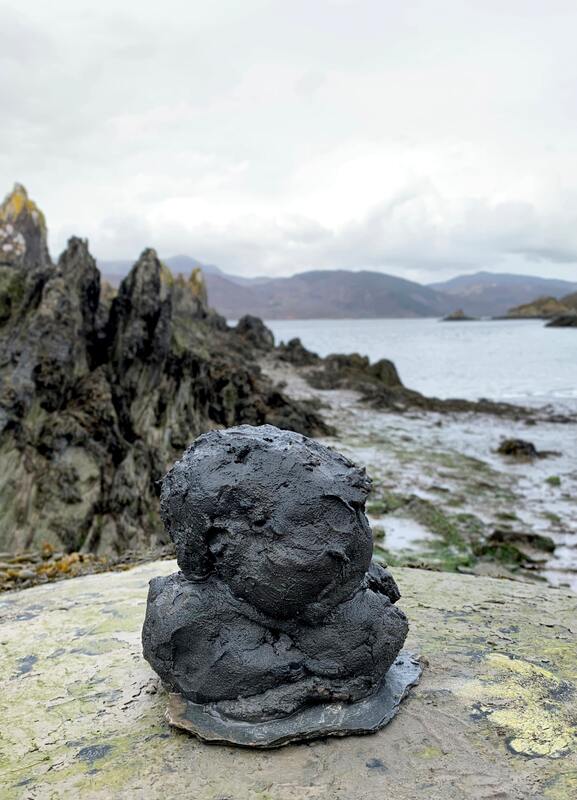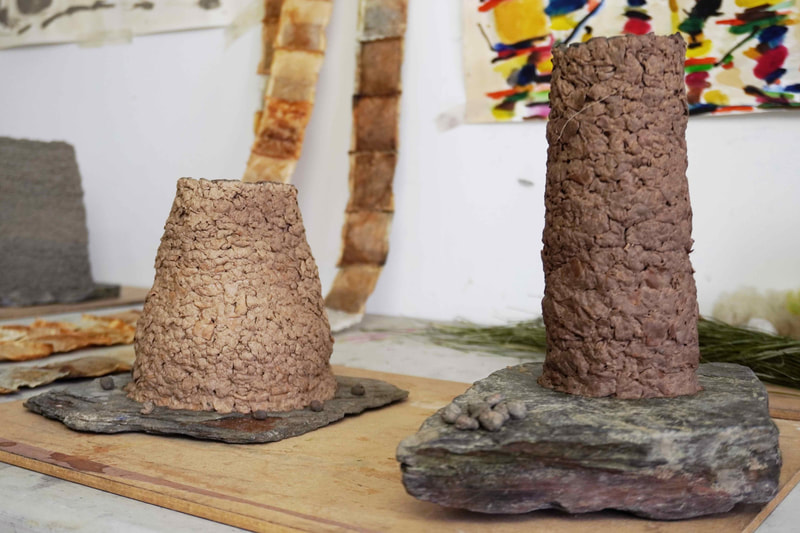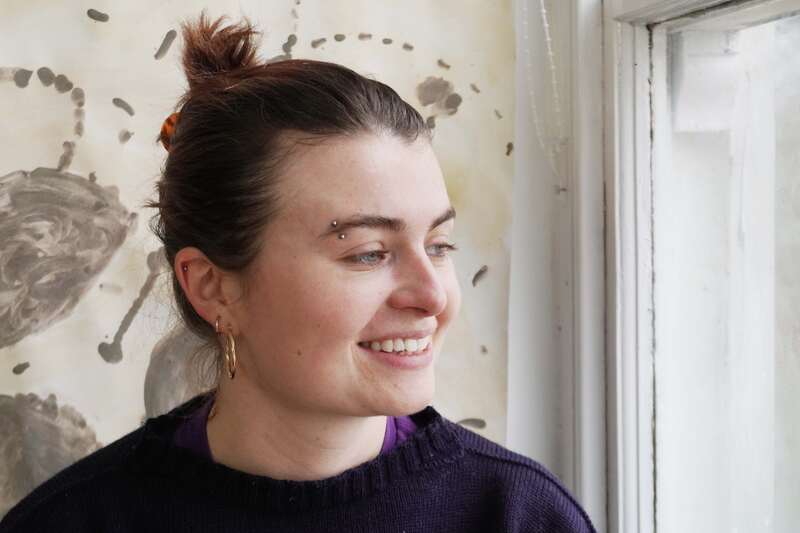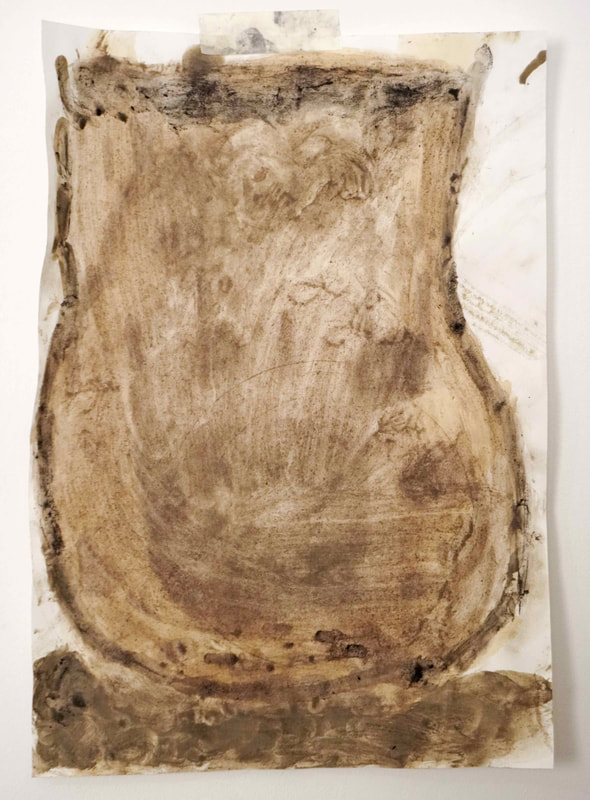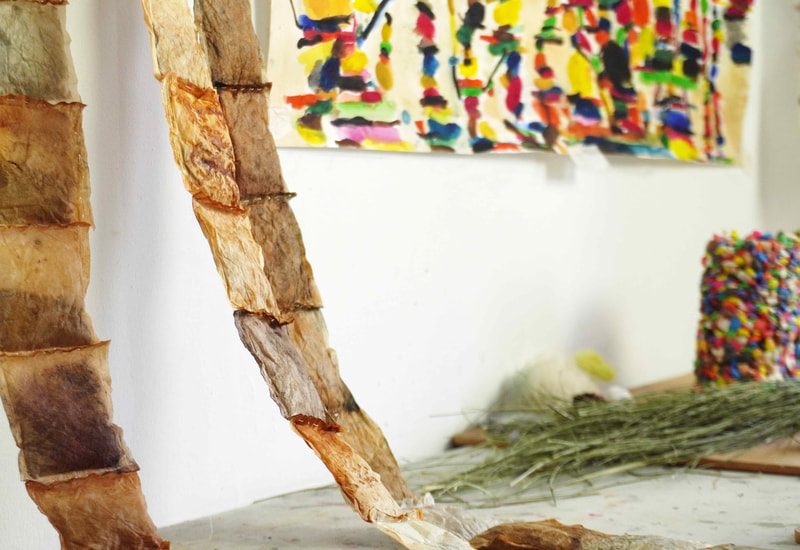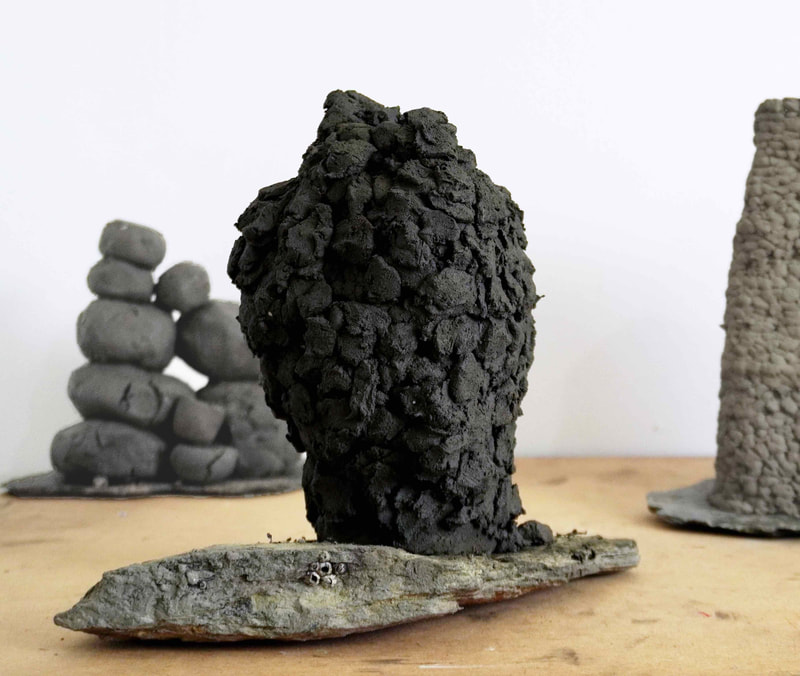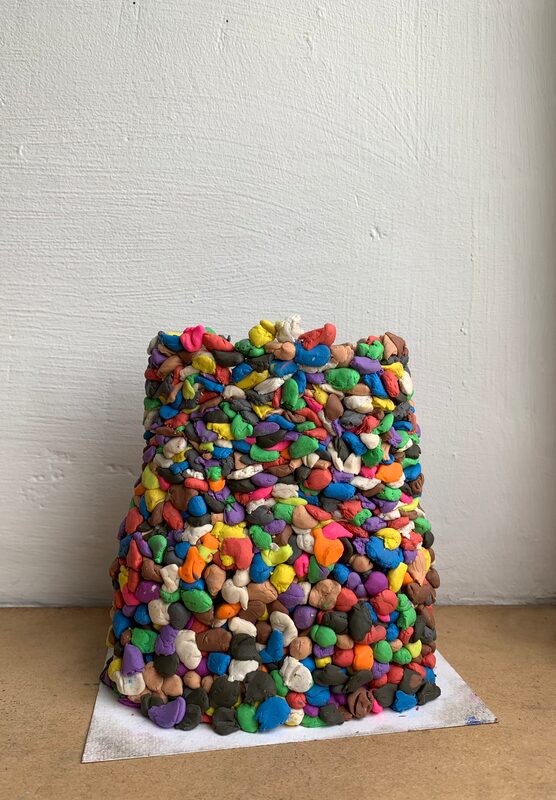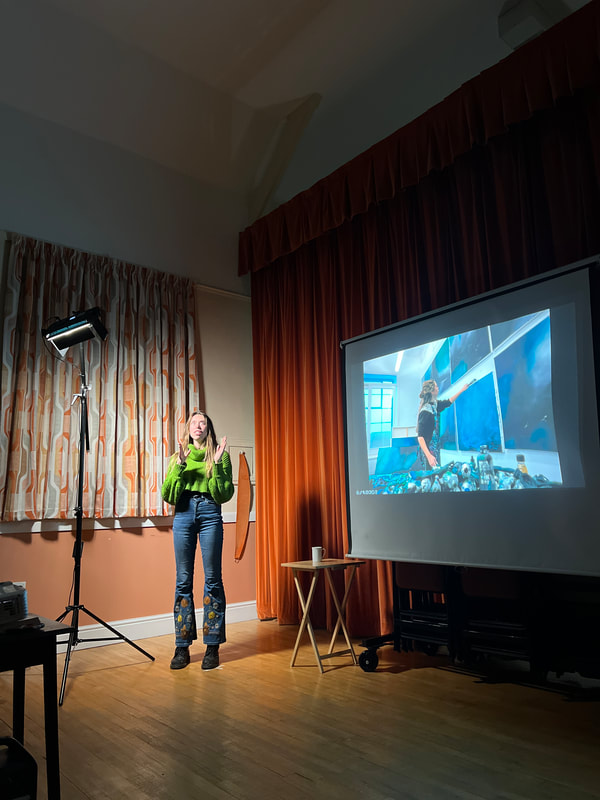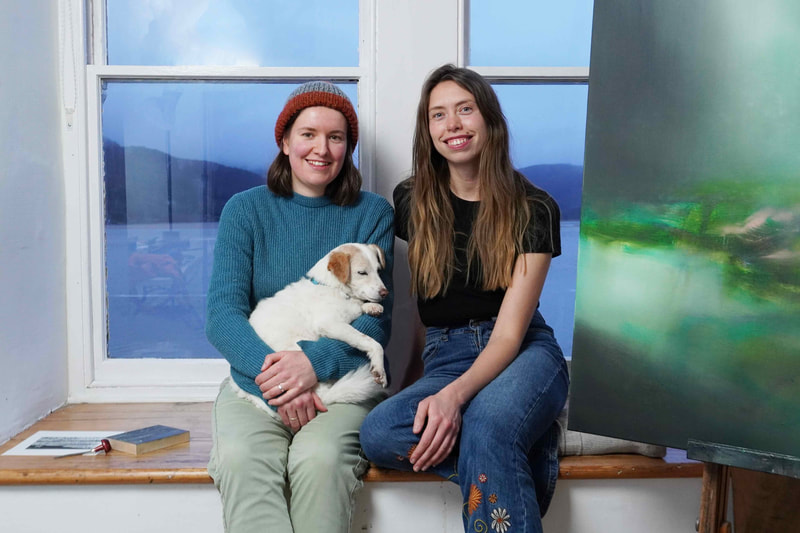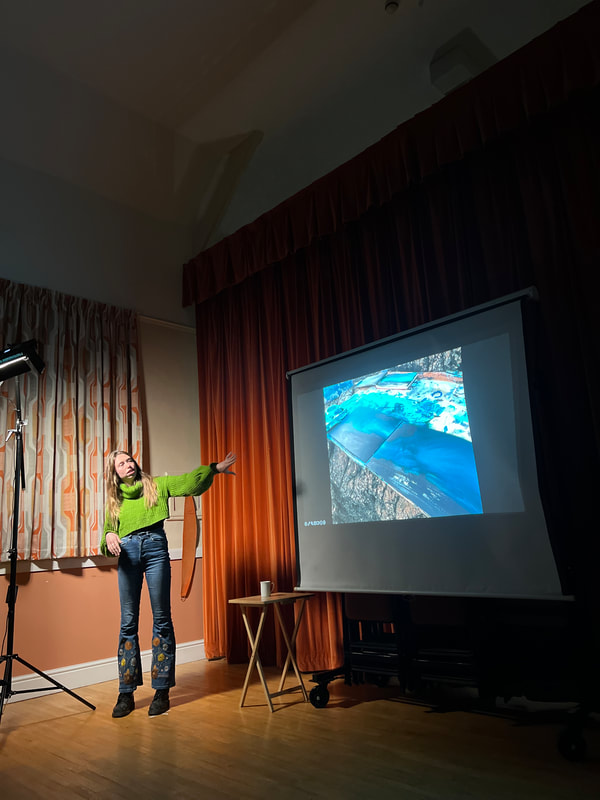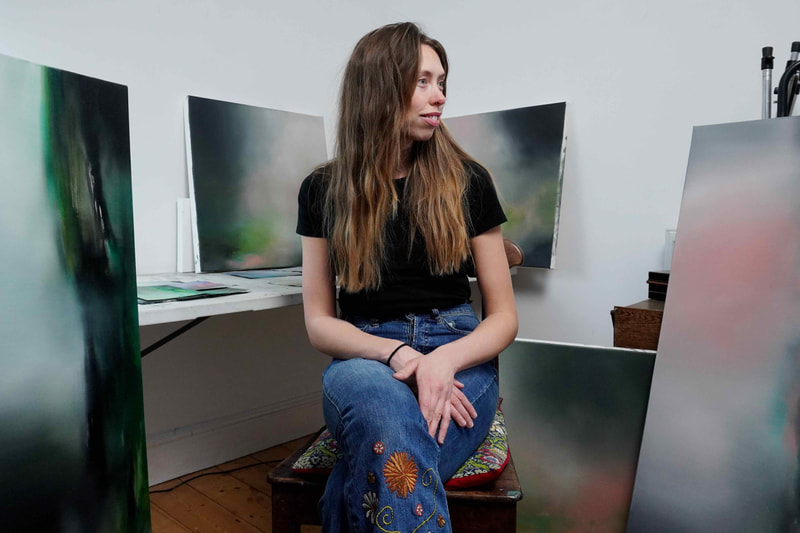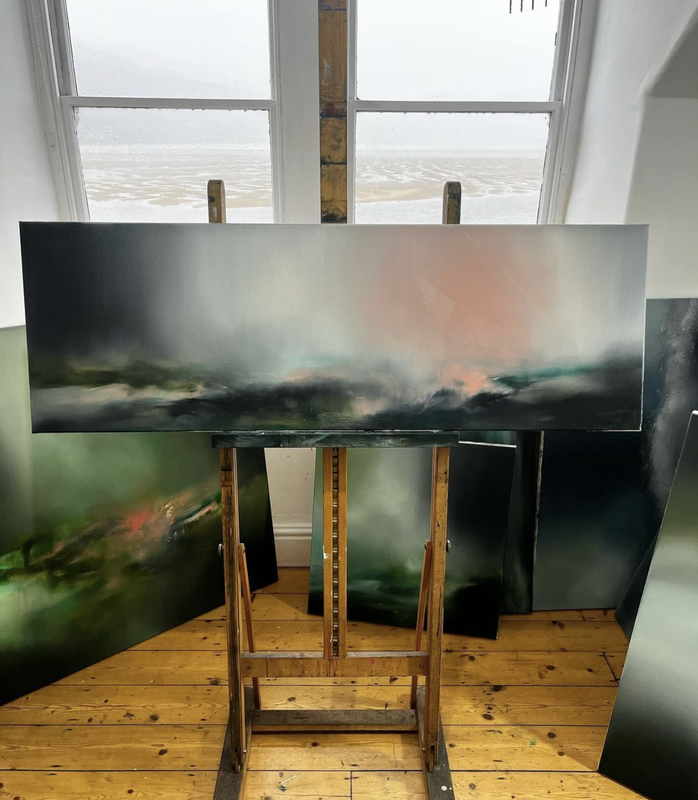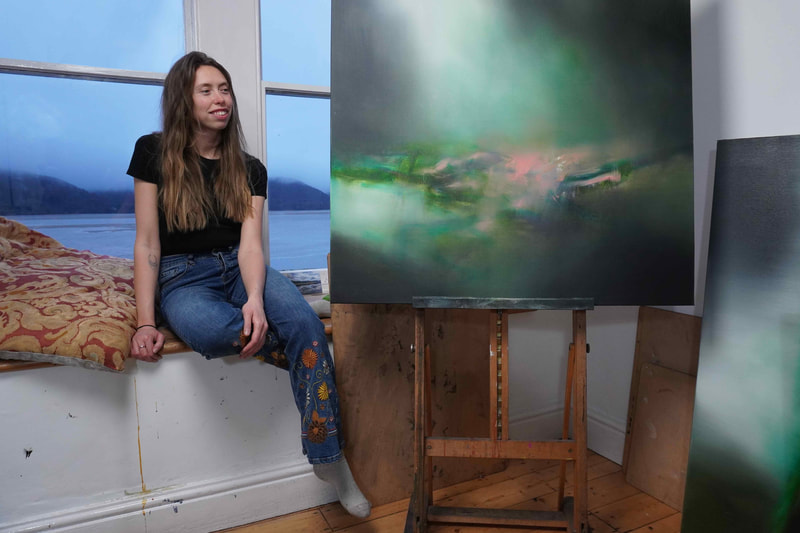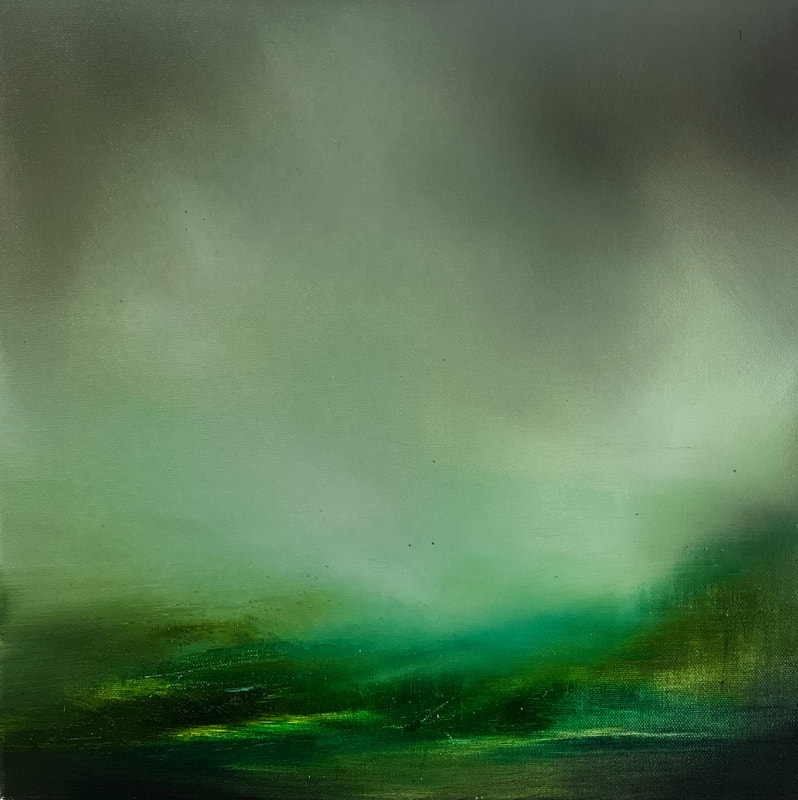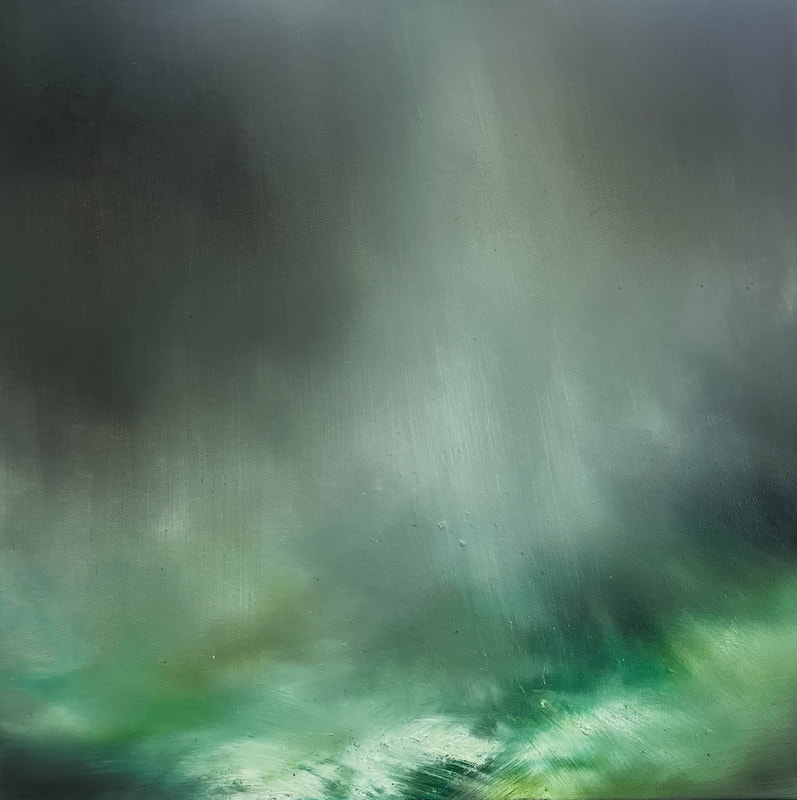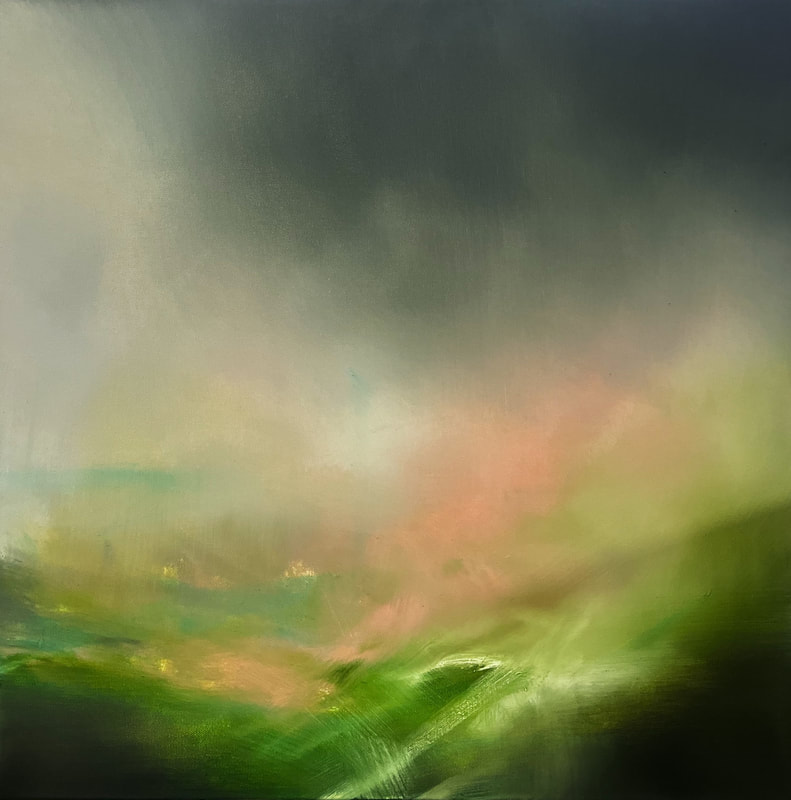|
It has been a very expanding and affirming experience spending time at the Mawddach Residency, sensitively hosted by Scarlett and Jake and alongside lovely fellow artist Anna. We had a good mixture of deep conversations and respectful quiet. To have use of a studio in a new space was exciting and after a few days I fell into a new rhythm that reflected the tides of the estuary outside the window, sweeping into the studio each morning to rearrange thoughts from the day before and then heading out towards the sea. Each day at low tide I walked along the estuary to the bridge to explore the secret worlds revealed when the tide is out; beautifully carved patterns in the sand and treasures swept in on the previous tide. These treasures were taken back to the studio to sort through, some returned to the water and some brought home in my suitcase to press into clay later. Although I was always alone under the bridge, I could sometimes hear people walking overhead and enjoyed the secrecy of this. I spent time in the magical woods and bogs behind the house, taking photos with a little clip on fish-eye lens on my phone to try and capture the otherworldliness of the place. I was captivated by many things, how the roots cling to the rocks, the mossy worlds on fallen trees and the bracket fungus the size of a car tyre.
As well as photos and works on paper I brought back lots of words, snippets of ideas and things to think about, prompts such as 'what do the trees do at night?' which I had taped to the wall to help my process. I have so much to work on from the experience and I think it will stay with me for a long time, both the internal and the external landscapes. Clare Day
0 Comments
During my time at the Mawddach Residency I aimed to develop my practice, both in my plein air work and my studio work. The mountains I usually paint are much more rolling and grassy, less rugged and rocky than those of North Wales. I wanted to discover the new colours and textures and express them in my work. It took me a little while to get my eye in, to get to know the landscape. On my first day I made lots of ink drawings, followed by some initial plein air works which I now feel are very rudimentary. Interestingly, I can see through the intense colours I used in these first paintings that I was feeling overstimulated both by my new surroundings and the excitement of being on my first residency. This is interesting to me because I haven’t noticed or linked my colour choices to my emotions before, but now looking through my work of the last few years I can see that it is in fact very influential. As the days went on, I could see clear groupings of works emerging. Each day, with different weather and light, and also changing emotions, produced a different feeling in my landscapes. I also began to understand the landscape around me, through painting it many times and also by getting to know it on foot. I could see my colour palettes settling, my brush marks strengthening. There were lots of new elements for me to learn to paint. I spent days painting the estuary, wanting to understand the water. I particularly loved these paintings. I experimented with painting on portrait-orientated canvas boards, to get in more of the water and sky and that feeling of space and magnitude I crave in a landscape. After the first week I decided to focus on my studio practice, which involves painting from my feeling and memory of a place. I started this separate, indoor way of working last year because I had been unable to paint outdoors so often due to the weather. I spent some days in the beautiful studio space letting out all of my energy and love for this new landscape, in a significantly more wild and free way than I have done before. It was because of this that these works were surprising to me, but I found it exciting and enjoyable to paint so intuitively and realised that my prior studio works had been somewhat held back. I wanted to express the feeling of space, height, light, the wind and the stillness, the sound of Canada geese and oyster catchers and skylarks. During the last couple of days of the residency, I went out painting again. I played with bringing some elements from my studio work into my plein air work, which sometimes worked and sometimes didn’t. This is a question I am moving forward with, post-residency, and will continue to play with merging the two. It may be that they are destined to be two separate ways of working. I also noticed, in my plein air works of the last day, that my brush marks were much looser and more spontaneous after having made all of those expressive studio pieces. One of my favourite paintings from the residency was made on that last day.
My time at the Mawddach residency was entirely nourishing. Spending two weeks walking and painting in that magical landscape has led to huge developments in both my art practice and myself personally. It has given me some much needed encouragement and confidence after a long period of darkness. I feel renewed, like the surrounding nature springing back into life after a long winter. I will cherish the memories and the connections I have made. Jess Hinsley website I applied for the residency as I was nearing the end of a third year on the Turps CC mentoring programme and, feeling somewhat untethered, believed that two weeks of quiet focus would enable me to better navigate this transitional period. Being on the residency was always going to be a time for reflection and exploration, and to tap into something authentic in my practice. I love nature and the outdoors, so it was my intention to get to know the landscape more intimately by walking and making field sketches. By drawing, re-drawing, cutting up and editing back in the studio, I wanted to try and locate a sense of presentness in the landscape, a density of experience that would inform new paintings. I didn’t take oil paints, my chosen medium, so I was attempting to describe some imperceptible characteristic of the landscape using materials that I don’t often use (egg tempera, gouache, pastel and charcoal), and hoping that these unfamiliar materials would also open up possibilities. I was fortunate to arrive at the height of spring’s abundance with new life overflowing in the hedgerows and a proliferation of sturdy lambs with their watchful mothers keeping me company in the hills. I hadn’t been to North Wales for some years, and I’d forgotten just how majestic the landscape is compared to the gentle rolling countryside of my home. The scale was humbling and I sensed a palpable shift in perspective as I adjusted to my own smallness. Out walking, I found myself drawn to the many ruined cottages spread across the hills, roofs missing, their gable ends standing like monuments to long departed inhabitants. I loved poking around the dilapidated gorse-strewn interiors (now exteriors) littered with sheep dung, a tangle of weeds sprouting from crumbling mortar, and imagining the families that had lived and worked in these harsh environments. I know these humble dwellings will appear in future paintings. I also loved the incredible network of dry stonewalls that run everywhere - up, down, across and around as far as the eye can see, cutting through the land at impossible angles. I wondered at the toughness and tenacity of the builders of these human-drawn lines of stone. I was determined to get out and walk every day, to capture as much as I could on paper, in my head and with my camera, stockpiling memories for my return home. The landscape demanded that I was more attentive to its sights, sounds, smells and textures and to the folkloric and spiritual that are intrinsic to Wales’ cultural heritage. I was mesmerised by the lush ferns, the steep wooded valleys and the luxurious chlorophyll-green moss covering every craggy rock, as soft, dry and dense as a pure wool carpet. An insistent birdsong, particularly that of the Chiff Chaff with its perky announcement of spring, provided a magical soundtrack to each day, whilst the pungent smell of hawthorns in flower and wild garlic permeated the warm spring air. This slowing down and the intense quiet and solitude seeped into the drawings I was making and, as the days slipped by, I felt an urgency to somehow hold on to this marked sense of the here-and-now. With minimal outside distractions, the days naturally found an ebb and flow; rising early, pilates for my creaky back, breakfast and then out exploring with my sketchbook. Afternoons were spent making drawings back in the studio where I shared the space with Jess Hinsley, the other artist-in-residence. She was the perfect house mate and, despite our age difference, we shared a remarkable amount in common, not least our love of nature and wild places. We quietly orbited each other whilst we worked, meeting up over dinner or a cup of tea which I looked forward to after a solitary day. Thankfully there was no television and we read, knitted (Jess), exchanged life stories, played Scrabble and laughed a lot. My one connection to the outside world was through Instagram, and even this felt like an unwelcome intrusion on the idyll of the estuary. Watching the multitude of birds - nuthatches, goldfinches, chaffinches, robins, blackbirds and blue-tits at the kitchen window feeder was a daily ritual. The dilemma in the morning with my first cup of tea was deciding whether to watch the birds feed from the kitchen or to gaze out over the heart-stopping view of the estuary and mountains from the studio. The residency has been a wonderful restorative break from the quotidian. I feel reconnected with my artist self and am excited about the next few months of painting. I have come home with a plastic A1 portfolio stuffed with drawings, a full sketchbook, memories that will stay with me for a long time, and a strong desire to get on and make work. The Mawddach is a special place where creativity flows more easily without the demands of daily life. Scarlett and Jake have created such a warm and supportive environment for artists in their beautiful art-filled home that one can’t fail to be inspired and to come away somehow transformed.
Helen Baines website My plan for the two weeks was to explore the local landscape and record some of the textures, plants, rocks, human traces on the landscape and movements of the tide along the river estuary. I took some materials with me but I wanted to be able to collect local materials to make inks and investigate working with the clay from along the riverbed, and be led by the landscape rather than making too much of a daily plan of what I wanted to achieve. It was wonderful to be able to watch the tide changing on the river each day - the movement of the water, and the gradual revealing, and disappearance of the sandbank in the estuary. I was totally mesmerised by the landscape from the studio window seat and on reflection feel it was an important two weeks of observing rather than capturing. I think I needed at least another two weeks to do that justice! I made collages and drawings of the shapes that were formed and the negative shapes in the water around them. I tried to capture the trickling sounds of the water and current with words and the movement of the huge mounds of seaweed moving by drawing along the tideline. I collected gorse, nettles, clay from the estuary, seaweed and different coloured earth from the woodland to make inks and then used these materials to make drawings - some made with brushes I created using different items (natural and manmade) I had collected. I played with the clay and seaweed, using the strange textures of the seaweed to create new textures to evoke the landscape and made shapes with the clay inspired by the moss formations in the woodland behind Mawddach Crescent. I took rubbings from the rock formations to build up a texture map of the area. The moss was also a huge source of inspiration during my residency and I was listening to the audiobook of Robin Wall Kimmerer’s ‘Gathering Moss’ while in the studio - learning about moss and being inspired by Robin’s words and stories about learning to see what’s right in front of us, on a tiny scale. Robin also spoke about how mosses grow in the ‘boundary layer’ of the earth, where the air is still, and how every object/being has a boundary layer. This is something I want to continue exploring in upcoming work. Being on the residency with my partner Stuart Leech was interesting as I was able to explore the landscape through my eyes but also from a different perspective of how he saw things. We were both inspired by the way nature took over old mines and manmade structures and have some ideas for a collaborative project that we would like to come back to explore and create which feels exciting.
The few weeks leading up to the residency for me felt hectic and busy, so spending two weeks at the Mawddach Residency was incredibly nourishing on many levels. I feel I had a personal revelation while I was away about my confidence and the way I have been working on my practice the last year. I think the time and space away from the busy everyday and also experiencing how Jake and Scarlett (and Toby of course!) balance their practices and everyday life (and work) has been a huge inspiration. Louise Frances Smith website I would highly recommend two weeks at the Mawddach Residency. Getting out of the routine of everyday life and immersing yourself in a new place and atmosphere is a rewarding and eye-opening experience.
I had ideas before I went of the kind of things I might be interested in, the industrial past of the area and what the future might hold in terms of climate change but there are so many stories and histories to be told about the area. Even the story of how the very house you are staying in came to be is a fascinating one. We spent time exploring the local area and landscapes, I used these excursions to take photographs and then spent my time at the house reading and researching. In-between chats with Jake and Scarlett, stroking Toby, watching spring bloom and the hourly fascination of the ever-changing estuary sparks of ideas were found and contemplated. Particularly inspiring to me during my time were the writings of Rebecca Solnit and vising the abandoned slate mine at Aberllefenni and while I didn’t come away with fully formed work the time and space at the Mawddach Residency has generated ideas that will come to fruition in time and that to me is as valuable as anything else. Stuart Leech website Two weeks have now passed since the end of my residency, weeks that have allowed me to spot the patterns in my responses to the many questions of 'How was it?'. Going into the residency, I imagined it to be challenging and intense and expected myself to peel away some of the habits that I have wrapped my life in. I was right on all three accounts. My project was an intensely personal one and to find it resonating with Scarlett and two other artists on my last evening has moved me more than I ever thought it would and I am deeply grateful to Jake and Scarlett for trusting me with two weeks of creative freedom.
For my project, I wasn't so much interested in the landscape or history of the estuary, instead focusing on signifiers of an old everyday life (giant buttons, the smell of charity shops, the colours of road signs, a pub) and using them to pick up a thread that was dropped years ago, to see where it would lead me. The residency has allowed me to quietly explore how a project can intuitively develop, how I can move on when I realise that my initial idea is already spent and I have a week and a half to take things further without knowing what 'further' even means, how to trust myself creatively. The black and white of my prints and paintings tie them to the poems that were the starting point for my residency, small observations typed in black on white, but over time I found myself moving away from the idea of illustrating my writing and moving towards a search for a different way of expressing what was already expressed in the poems. Once that search had started, my experiments with making different marks with different tools, including my laptop, an E guitar string, my mug, naturally changed into exercises in disciplined obsessive small format mark making until the search eventually culminated in big painted barely recognisable bodies, exploding into being in only a few minutes. In this, my prints and paintings almost by accident illustrate how difficult I find it to grasp grief and rupture, to make sense of the many layers of change that have allowed me to build up to the residency. Now, two weeks later, I can sense that the residency is not yet over for me, but will continue to shape my understanding of the creative process. Dana Ferchland This residency was an opportunity to spend some time within a beautiful rural setting and explore some ideas for new projects. I wasn’t too sure what to expect and had only vague ideas of what I might focus on, as I wanted to come with an open mind, to respond to the land, light and feelings I had whilst there. To be truly inspired and immersed by my surroundings.
In the residency I was able to explore my practice in new ways, with a limit on what I could bring, I took out the unnecessary and focused on what was around me. Often with the other artist in residence, Esme, I was seated by the arched windows overlooking the ever-changing estuary framed by the mist-cloaked mountains. Taking in these moments especially in the morning and at dusk to watch the thick wet* reemerge changing the view and atmosphere each moment. This ephemeral nature holds an affinity with my natural dyeing practice, one which I was eager to explore in this part of Wales. Each day on walks I went prepared to see if I might find some natural material to dye with. With eager eyes I soaked up the local area, walking, thinking and gathering, material as well as thoughts. Picking the evergreen gorse flower (Ulex europaeus), slowly one by one, deepend my appreciation of the flower, its delightful colour, coconut smell and reproachful sting should I try picking more than two blossoms at a time. Its bright sunny yellow was replicated in the small fabric swatches I dyed as well as ink I made. To be with plants from the picking to the dyeing process is an honour and for my time at the residency I dyed with plants and materials I was surrounded by, choosing carefully so as not to deplete areas of natural wildlife. Working with botanical colour gave me a grounding and a sense of place through familiarising myself with the area of the Mawddach estuary at this season, the cusp of spring. I derive a lot of joy from the processes of collecting, letting the materials lead the way. Developing a colour palette of my time in Wales these fragments have begun to take shape in different forms, from pleated, stitched and patched works. Collecting soft rush became an almost daily ritual and partially collaborative effort between myself and Esme. Both of us were drawn to the plant with its potential to be made into cordage as would previously been done for hundreds of years, learning that their strength, once dried and twisted, was once made into baskets known as kishies. With stripping the soft rush and splitting it into finer strands, the monotonous task becomes natural and second nature, the movement refined over time. Through these processes it gives you a greater appreciation for the material as well as the material objects we have around us which can often be taken for granted. I explored soft rush through cordage, weaving, stitching and net-making. With the slowness of dyeing from the walking, searching, picking and steeping, I am immersed into a different time where I feel more present, seeing the colours change before my eyes is a very special moment and has a spell-like quality. A watery sense and fluidity is often how my work is formed and like the ephemerality of nature I tried to capture those moments in which we can be in awe of the world around us. Those outer reflections can be felt in our innerselves too, connecting more deeply to our bodies, in a time we are becoming more disembodied from the natural world. As part of the residency I dedicated some time moving in and around the local area, walking but also dancing. I wanted to embody the experience of a place using improvisation techniques which asked simple yet poignant questions, bringing presence to the movement, developing a conversation between body and land. These movement studies became a memory mark of a place using canvas, clay, ink, charcoal and graphite. I collaborated with the textures of the earth with my movements creating dynamic gestural drawings. These works capture a sense of my expression, movements and feelings of the place. Being led by the materials themselves, I let go of a sense of control, I lean into the unknown. Whilst at the residency I reflected on my practice my work often varies in style yet there is a familiar thread throughout, I realise I enjoy the careful slow processes which come from the textile craft as well as the expressive and chaotic movement works which are visualised differently. My time at the residency reminded me that we do have nature around us, it is slowing down and noticing that is often overlooked. So on returning to London, where I live, I have been conscious of experiencing my surroundings with a new outlook and as well as continuing to develop the work I began on this magical residency. *Dense Mist (from Exmoor) website I came to the residency without planning exactly what I would do. I didn’t take much with me as I wanted to make use of what I came into contact with, planning to make some sculptures that would be ephemeral and natural and that I wouldn’t bring back with me. I made two sculptures from cardboard that I hand pulped and grew from small parts, coiling up from pieces of slate I found at the beach. I didn’t have a plan for their form but allowed them to grow slowly as they wished. I felt myself drawn to making vessels, enjoying their possibility and potential, their openness and readiness to be used, filled, fed. The evening before we left I placed these two sculptures into the fire. I had been thinking about dry stone walls for a while and I was finally able to meet some during my time at Mawddach Crescent. I loved being near their deep sense of time. I imagined the forming of the stones themselves and felt connected to the ancient process of arranging stones in this way. I was fascinated with how they seemed to be partly absorbed by the landscape, the gaps between the stones now homes for other living things. I felt inspired by how non-intrusive this form of making is, a coming together of human and nature in a gentle and sustainable way. I am drawn to their haphazard nature paired with a sense of care and consideration. They felt weighty and monumental as well as vulnerable and precarious. I made some drawings as well as a modelling clay sculpture with the walls in mind, and a sense of balance, stacking, and care. I spent a lot of time on the window seat looking out at the view and experiencing a sense of shifting, one that was slow over time like the forming of stones or making of mountains. And then there was the shifting of mist and the ripples of the water that were calm but swift and fleeting. The mountains seemed so steady and heavy in comparison to the mysterious mist. But even mountains move, they teach us to rest and still feel alive because in all their weight they are still breathing. I thought about contrasts and contradictions, and how I try to give space to the different parts of me when making to be both soft and slow, quick and spontaneous, both mountain and mist. Making cordage from natural fibers has been involved in my practice for a little while now and when I saw the abundance of soft rush in the environment it felt right to start collecting a small amount for making string. The name ‘soft rush’ felt like such a beautiful combination of words that felt like the name of the movement of dancing mist across the mountains. I thought of the vastness of space, of infinite distance and immediate presence - the mountains were far away and the grass was there in my hand. I took the soft rush home with me and will be slowly twisting it into cordage to use in a piece that hopefully captures a part of the landscape.
After a quick cold swim one day in the estuary and feeling my feet sinking into the silt, I wondered what was beneath the sand, and the next day I used my hands to uncover a dark coloured clay. I used the clay in a similar way to the cardboard, adding small pinches at a time to coil around and up from the slate. The second piece was made more quickly, coiling a pot and adding small pieces to its body. These two clay sculptures I titled ‘The Mountains and Me - An Offering To The Estuary’. The day before we left I placed them both on the estuary bed from where they came, allowing the water to carry them home. Making these pieces knowing that they would not last reminded me of the joy of making sand castles. I also made some drawings using the clay on paper, applying it directly with my hands which felt playful and free, with a closeness to material, an activation of the senses, and a relationship to the body. Often my work doesn’t directly visualise the world around me, instead, I aim for the work to capture a sense of the strangeness of life, its ambiguity, uncertainty, and unpredictability. Immersing myself and exploring an unknown place that was both beautiful and tangled, peaceful and mysterious feels to have re-energised me with this essence of life. It was a lesson in getting lost and feeling at home. website I found my time as artist in residence at the Mawddach Residency to be so grounding, reflective and inspiring. My aim for the residency was to allow myself the time and space to be immersed in a new environment, play around with new ideas, create from a place of no distractions and build up a body of new paintings.
I spent my time trying out new ideas, palettes and focusing on developing my work in a new direction and getting out of my comfort zone. I felt like the space and the environment around Mawddach was the perfect setting to be inspired, to sit in stillness and have the mental space to create and also felt so grateful to Jake and Scarlett for accommodating us in such a kind and giving way. Another positive to the residency was getting to know my fellow artist in residence, Molly and her lovely little dog Winnie. We had never met before but we were able to gain inspiration from eachother work’s (even though they’re so different) we were respectful of our working space whilst also co creating such a lovely positive space to work. I’m so grateful for having this time to create, to make space for a new collection of paintings and for having this time at the beginning of the year to delve fully into my work and gain so much inspiration which will provide me with endless source material for the year ahead. website As an anxious person (and driver) I hadn’t really thought past the drive to the Mawddach residency or really considered what the two weeks might hold other than a change from my usual routine. So I arrived slightly bewildered and overwhelmed by the beautiful landscape and everything the residency had to offer. I immediately felt welcomed by Scarlett and Jake who cooked me a delicious welcome dinner after I’d unpacked and walked to Barmouth (I couldn’t wait until the morning to cross that impressive bridge). On the first day I created a reduction wood engraving by the estuary and was immediately humbled by the Welsh weather when a huge gust of wind took 8 of my prints and thrust them into the estuary. A couple of days in we were joined by Ellis O’Connor who was my fellow artist resident and flatmate. We’d never met before but clicked straight away. We spent the two weeks working independently, focussed on our own work, but enjoyed chatting (when we weren’t listening to true crime podcasts) and sharing our experiences of being self employed artists. I make small prints while Ellis paints huge canvases, the scale of her work seemed to dwarf mine especially by the end of the 2 weeks when she’d painted an impressive collection of oil paintings. I loved working alongside an artist whose medium differed so much from mine while the subject matter and the way we respond to the landscape around us is so similar. I was very grateful to be able to bring my little dog Winnie on this trip with me. She loved the local walks which we did multiple times a day and was in her element by the cosy log fire in the sitting room. Winnie’s favourite resident was Toby the cat who didn’t feel the same about her and who darted up a tree after he panicked when she approached one afternoon. I loved having two weeks to just make work and not worry about admin or fulfilling orders. It was time to experiment and reassess. I created 5 reduction wood engravings and lots of collages. I also found a love of sketching with watercolours, something I’ve continued since being home. My time at the Mawddach residency felt very freeing, it seemed like I was really living each day and soaking everything in, not just rushing through while trying to tick off my forever growing to-do list. I will look back on those two weeks happily and I long for similar experiences in the future knowing that even an anxious artist can enjoy an adventure every now and then. website 'Out of Ink' Podcast episode about Molly's residency |
RESIDENTS
All
|



















































